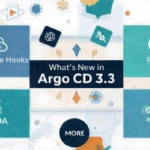
Many DevOps and platform engineers we talk to share a common concern: securing their Kubernetes clusters. By default, Kubernetes allows unrestricted communication between workloads, creating a vulnerability. An attacker breaching one container could move freely within the cluster, compromising others.
The “least privilege” approach, while ideal for restricting workload communication, can leave your applications exposed to unknown exploits and zero-day attacks. This is where Calico’s policy recommendations come in.
Calico: Your Key to Default-Deny and Namespace Isolation
Calico offers a solution: out-of-the-box default-deny implementation. This means all traffic between pods is blocked by default. You can then explicitly allow only the necessary communication between pods. Additionally, Calico enables namespace isolation, preventing attackers from moving laterally between different namespaces within the cluster.
Learn More About Microsegmentation and Calico
This blog post serves as a starting point. We’ve included additional resources to deepen your understanding of microsegmentation and Calico:
- White Paper: Dive deeper with a comprehensive guide on implementing microsegmentation for modern cloud-native workloads and achieving tenant isolation in Kubernetes. Read White paper
- Calico Resources:
- Guide to Microsegmentation: Understand microsegmentation and leverage Calico network policy for container isolation.
- Microsegmentation Self-Paced Workshop: Learn about identity-aware microsegmentation and define granular security controls at your own pace.
- Build Cloud Solutions with Calico in Azure: This free course explores Calico’s integration with Azure, including deployment options and hands-on labs.
Strengthen Your Kubernetes Security Knowledge
Consider attending the following events to enhance your Kubernetes security expertise:
- Microsoft AKS Security Bootcamp: Gain insights into Kubernetes Posture Management (KSPM) and compliance.
- May 23, 2024 | 10 am PST | Register Here
- June 6, 2024 | 10 am GMT | Register Here
- Securing Multi-Cluster Kubernetes Environments with Calico’s Cluster Mesh: Discover how Calico secures multi-cluster deployments.
- May 21, 2024 | 10 am PST | Register Here
By implementing microsegmentation with Calico, you can significantly improve your Kubernetes cluster’s security posture and mitigate the risk of security breaches.
Reference to the Article- Tigera
Follow us for more updates!




